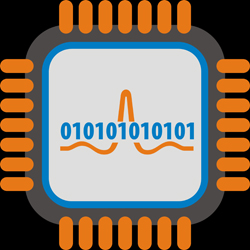It’s all about inputs and outputs (I/O). How do I get an audio signal from one to the other? The ongoing evolution of professional audio has produced a number of viable digital interfaces to complement legacy analog I/O practices. The choices may seem confusing at first, but when you break them down the strengths and weakness of each become apparent.
In this overview, I will start with analog since it is familiar to most readers and serves as a reference for the discussion of digital formats. I will focus on professional interfaces only. While similar in many ways to consumer I/O, professional interfaces are more robust against electromagnetic interference (EMI) and allow much longer cables – both requisites for large sound systems.
A professional analog interface is a point-to-point connection between an output and an input (Figure 1). It is electrically balanced, which provides strong immunity to EMI. Cabling is shielded twisted-pair. The interface is impedance mis-matched, where a low output impedance (typically less than 200 ohms, or Ω) drives a high input impedance (typically less than 2000 Ω). The impedance mismatch simplifies the interface by (usually) eliminating the need to consider specific impedance values.
Figure 1: An analog interface is point-to-point, with no exact requirements with regard to cable type, connector type, and cable.
For example, a 100-ohm output would produce the exact same signal level into any high impedance input (10 kΩ, 20 kΩ, 30 kΩ, etc.). An “output” simply connects to an “input” – end of story. It is often permissible to passively split an analog output to drive several inputs. It is not permissible to “Y” multiple outputs together.
The signal is in the form of a time-varying analog voltage that can span a level range of over 100 dB. Signals are classified by the magnitude of this voltage (e.g., microphone level, line level, loudspeaker level). The signal flows in one direction only – from output to input. Cable lengths are limited by cable capacitance, and can approach 300 meters (1000 feet) in some applications.
Analog connectors are classified by the number of electrical contacts. The impedance of cables and connectors is not a consideration, since analog audio signals are low in frequency in terms of the electromagnetic spectrum (Figure 2).
Figure 2: Analog audio (sometimes called baseband audio) is below 100 kHz in terms of spectral content. This is “low” frequency in terms of the entire electromagnetic spectrum.
Pros:
—Simple and mature.
—Easy to troubleshoot.
—Ultra-reliable.
—Does not require impedance-matching between output and input.
—Signal propagation through a device or down a cable is practically instantaneous, with no practical delay or “latency” that must be considered.
Cons:
—The electrical properties of the cable can degrade the signal.
—Multiple audio connections, along with electrical “grounds” can produce ground loops, which may in turn cause hum and buzz problems.
—Multi-pair cables are heavy and expensive.


















